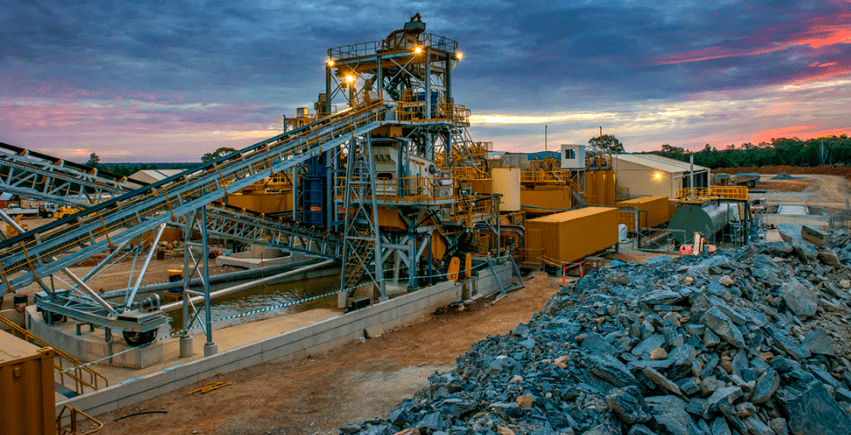
After placing restrictions on foreign participation in supplying “critical minerals” used in batteries and high-tech devices, the government of Canada has ordered three Chinese companies to divest their lithium mining holdings in that nation.
The order issued on Wednesday comes as tensions between the West and China increase over who will control the supply of minerals such as lithium, rare earths, cadmium, and other materials used in solar cells, wind turbines, mobile phones, electric cars, and other new technologies.
As the ruling Communist Party promotes the growth of the renewable energy, electric vehicle, and other tech industries, Chinese miners are investing in manufacturing in Africa, Latin America, Canada, and other places.
Francois-Philippe Champagne, the Minister of Innovation, announced restrictions this week on foreign state-owned firms’ ability to produce “critical minerals.” Any level of investment, he warned, would only be accepted on an “extraordinary basis.”
Following Russia’s war on Ukraine, which disrupted the world’s oil and gas markets, and conflict with China, which produces the majority of the world’s rare earths, Western governments want industrial supply chains controlled by allies.
A court mandated that Sinomine (Hong Kong) Rare Metals Resources sell its shares in Power Metals Corp., a Vancouver-based company with tantalum, lithium, and cesium exploration interests in northern Ontario.
Chengze Lithium International Ltd. must sell its shares in Lithium Chile Inc., a Calgary-based business with active lithium properties in Chile. The Vancouver-based Ultra Lithium Inc., which has lithium and gold properties in Canada and Argentina, was ordered to sell Zangge Mining Investment’s interest.
Champagne said in a statement that while Canada welcomes foreign investment, it “will act decisively when investments threaten our national security and our critical minerals supply chains.”
Lithium demand is higher than ever, and while lithium production is expected to increase by 21% in 2021, global lithium consumption is expected to increase by 33%. The gap will widen as the West moves further away from China’s lithium supplies, prompting calls for at least $42 billion in lithium investment over the next six years to meet 2030’s forecasted demand of 2.4 million tonnes per year.
Canada (particularly Québec and Ontario) is currently positioning itself to be a major player in the global lithium stage, with large hard rock spodumene deposits and brine-based lithium resources in place.
As a result, companies active in the region, such as FE Battery Metals (CSE:FE) (OTCQB:FEMFD), are gaining attention due to their prime real estate and exceptional infrastructure in a mining-friendly jurisdiction.
FE Battery Metals (CSE:FE) (OTCQB:FEMFD) has secured one of the most dominant land positions just northwest of Val d’Or, Québec, consisting of several historical finds as well as new lithium prospects discovered through current exploration activities.
FE (CSE:FE) (OTCQB:FEMFD) has discovered numerous spodumene pegmatites on its property since acquiring it, all while focusing on its Augustus Lithium Project, which is located just west of the North American Lithium Mine.
First Energy Metals (CSE:FE) (OTCQB:FEMFD) Drills at Augustus Lithium Property 1.54% Lithium Oxide Across 7.3 Metres
FE Battery Metals (CSE:FE) (OTCQB:FEMFD) just announced the results of Drill Hole LC22-39 from the Augustus Lithium Property in Quebec, Canada. At 188.7 meters drilled depth, the drill hole LC21-39 intersected three lithium pegmatites, with the main 7.3 m wide pegmatite zone averaging 1.54% lithium oxide (Li2O).
All reported intercepts are based on drilled widths and have not been converted to true width. The results of the remaining drill holes from Phase 2 are still pending.
The drill program is based on historical and 2021 Phase 1 exploration data and the results of FE Battery Metal’s (CSE:FE) (OTCQB:FEMFD) surface trenching and sampling program. On the property, several historical drill hole collars were also discovered, which aided in the location and orientation of drill holes for the current program. Forage Hebert Inc. Drilling of Amos, Quebec, is in charge of the Drill program. For this work, a B-20 drill rig capable of drilling holes up to 1,000 meters deep is being used. A core shack is being constructed in the village of St-Dominique du Rosaire, about 50 kilometers from the property, for drill core logging, sample preparation, and storage.
On the property, 42 drill holes have been completed, totaling over 7,500 meters of core drilling. A rock saw is used to log and sample the drill core at the core shack. Field duplicates, standards, and blanks are inserted at industry standard intervals for quality control and quality assurance (QA/QC).
The samples were bagged and labeled according to best practices before being delivered to Activation Laboratories (ACTLABS) in Ancaster, Ontario, for sample preparation and analysis with 35113|4855850 2 laboratories code Ultratrace 7 and sodium peroxide fusion (Na2O2). ACTLABS is a commercially independent, ISO-certified laboratory.
For more information about FE Battery Metals (CSE:FE) (OTCQB:FEMFD), please visit this link or their website at https://www.firstenergymetals.com.
SOURCE FE Battery Metals (CSE:FE) (OTCQB:FEMFD).
Featured Image MegaPixl.
Read more investing news on PressReach.com.Subscribe to the PressReach RSS feeds:- Featured News RSS feed
- Investing News RSS feed
- Daily Press Releases RSS feed
- Trading Tips RSS feed
- Investing Videos RSS feed
Follow PressReach on Twitter
Follow PressReach on TikTok
Follow PressReach on Instagram
Subscribe to us on Youtube





